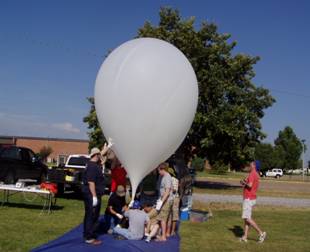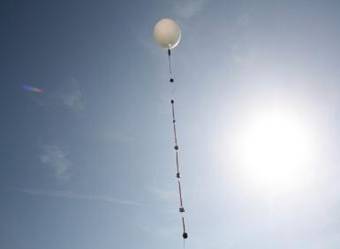 |
Contact information: Phone: (870) 972 3215 |
Heterogeneous Environmental ChemistryThe increase in earth’s temperature has resulted in the worldwide decrease in precipitation (i.e rainfall). This effect has a major role in two of very important atmospheric processes.
My research involves studying these two interelated problems : increase air pollution due to reduced air quality (heterogenous particle chemistry) and increase in water contamination due to increases in fertilizer use (groundwater contamination studies).
Heterogeneous Particle ChemistryAir pollution and the resulting deteriorating air quality greatly influence our climate and our health respectively. Aerosol particles play a significant, but poorly understood, role in the chemistry of the atmosphere ( above land or over oceans/seas).
My research:
BalloonSAT program at ASU With the support from the Arkansas Space Grant Consortium (ASGC) and NASA EPSCoR, we launch weather balloons into the lower stratosphere (an altitude of about 87,000 feet), carrying payloads that are equipped with instrumentation that measure light intensity, absolute and relative humidity, temperature, and ozone concentration as a function of altitude.
We recently launched our new payload container that will collect aerosol particles for analysis in the laboratory. These "vertical profile" aerosol measurements would provide important information both on the chemical and physical properties of aerosols, and most importantly help us understand the underlying mechanisms of vital atmospheric processes. These data can also provide essential information on the global distribution of aerosols to help understand the impact of aerosols on atmospheric processes, for the purposes of predicting weather and climate, as well as for monitoring the transport of industrial pollution. More research is ongoing to improve the overall accuracy of the collection and analysis of the balloon aerosol data. For more information about the weather balloon launch dates, success stories, collected data and images, visit : http://www.arkballoons.com/
Groundwater Contamination StudiesConcern for pollution developed alongside concerns for the environment in general. The advent of automobiles, increased chemical wastes and accumulation of garbage in landfills created awareness among the public that was aimed at decreasing pollution. Among the types of pollution, the one that has existed longer than any other is water pollution. Its consequences are readily seen when pollutants reach groundwater reservoirs, creating serious health hazards to people drinking the water. Groundwater contaminants can come from municipal landfills, leaking gasoline storage tanks, leaking septic tanks, and accidental spills and are examples of what we call point sources. Infiltration from farm land treated with pesticides and fertilizers is an example of a non-point source. Jonesboro AR is sorrounded by farms (rice, corn, soybeans) which use alot of fertilizers and water. My research and outreach efforts are geared towards helping farmers understand the issues involved with water usage and hopefully (hopefully) change their farming methods to improve water conservation.
|
||||

